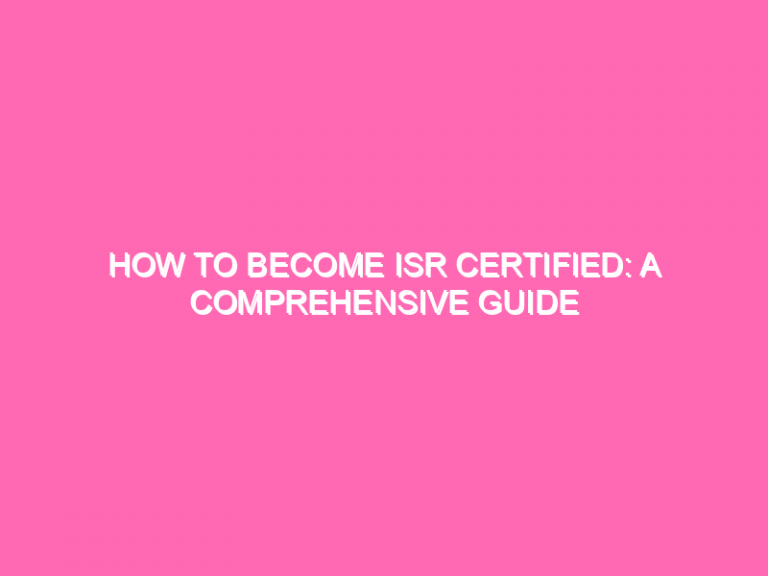Introduction
If you are considering a career as an ergonomist, you are joining a growing field of professionals dedicated to making workplaces safer, healthier, and more comfortable for everyone. Ergonomists study the relationship between people, their jobs, and the environment, and they use their findings to create recommendations that help improve the physical and psychological well-being of workers. In this article, we’ll discuss what an ergonomist does, the job outlook for ergonomists, the qualifications needed to become an ergonomist, and more.
What Does an Ergonomist Do?
An ergonomist is a professional who studies the interactions between people and their work environment, and they use their findings to make recommendations that will improve the safety, comfort, and productivity of workers. Ergonomists can work in a variety of fields, including health care, manufacturing, and office design. In each field, they strive to create working conditions that will reduce the risk of injury, improve employee morale, and increase efficiency.
An ergonomist’s day-to-day duties may include assessing workplace hazards, designing workplace layouts, developing workplace procedures, and providing ergonomics training. They may also evaluate existing furniture, tools, and equipment to ensure they are safe and provide the necessary support and comfort.
Job Outlook for Ergonomists
According to the U.S. Bureau of Labor Statistics (BLS), the job outlook for ergonomists is very positive. The BLS projects that demand for ergonomists will grow by 8% through 2029, which is much faster than the average for all occupations. This growth is due to increased awareness of the importance of ergonomics in the workplace and the need for ergonomists to design and evaluate safe and efficient work environments.
Qualifications Needed to Become an Ergonomist
To become an ergonomist, you must have at least a bachelor’s degree in ergonomics, engineering, or a related field. A master’s degree in one of these fields may also be beneficial. In addition to educational qualifications, potential employers may also look for experience in the field and knowledge of relevant software.
Certification and Licensing Requirements
Certification is not required to become an ergonomist, but it can be beneficial. The Board of Certification in Professional Ergonomics (BCPE) offers certification for ergonomists at the professional, associate, and certified ergonomist (CE) levels. The requirements for each level vary, but they all require a certain amount of education and experience, as well as the successful completion of a written exam.
Skills Needed to Become an Ergonomist
In addition to educational qualifications, there are certain skills needed to become an ergonomist. These skills include:
• Analytical thinking: Ergonomists must be able to analyze data from workplace assessments and make recommendations based on their findings.
• Problem-solving: Ergonomists must be able to identify problems in the workplace and develop solutions that are practical and cost-effective.
• Communication: Ergonomists must be able to communicate effectively with their clients and colleagues.
• Technical: Ergonomists must be familiar with relevant software and technology.
Frequently Asked Questions about How to Become an Ergonomist
What qualifications do you need to become an ergonomist?
To become an ergonomist, you must have at least a bachelor’s degree in ergonomics, engineering, or a related field. A master’s degree in one of these fields may also be beneficial. In addition to educational qualifications, potential employers may also look for experience in the field and knowledge of relevant software.
What is the job outlook for ergonomists?
The U.S. Bureau of Labor Statistics (BLS) projects that demand for ergonomists will grow by 8% through 2029, which is much faster than the average for all occupations. This growth is due to increased awareness of the importance of ergonomics in the workplace and the need for ergonomists to design and evaluate safe and efficient work environments.
What skills are needed to become an ergonomist?
In addition to educational qualifications, there are certain skills needed to become an ergonomist. These skills include analytical thinking, problem-solving, communication, and technical knowledge.
Is certification required to become an ergonomist?
Certification is not required to become an ergonomist, but it can be beneficial. The Board of Certification in Professional Ergonomics (BCPE) offers certification for ergonomists at the professional, associate, and certified ergonomist (CE) levels. The requirements for each level vary, but they all require a certain amount of education and experience, as well as the successful completion of a written exam.
Conclusion
Becoming an ergonomist requires a certain level of education and experience, as well as certain skills. Those who are interested in the field should take the time to research the qualifications and certifications needed to become an ergonomist and to consider their own skills and experience. With the right qualifications and skills, you can become an ergonomist and join a growing field of professionals dedicated to making workplaces safer, healthier, and more comfortable for everyone.




